Astronomers around the world are polishing their telescopes for a set of rare lunar phenomena happening this Halloween night. That’s because a full moon will be visible this Halloween, Oct. 31, for the first time since 1944. But this exceptional Halloween moon is only one in a series of special astronomical phenomena happening on the ancient festival date.
I See a Blue Moon Rising
“Blue Moon” was a classic popular song written by Richard Rodgers and Lorenz Hart in 1934. Farmers’ Almanac says that when four full moons happen in a single season “the third is considered a blue moon”. The last actual “Blue Full Moon” phenomena on Halloween night across all U.S. timezones occurred in 1944. In Europe it was 1955. However, one occurs in both regions this Saturday.
Full moons are separated by 29 days and while most months are 30 or 31 days long; so every 2½ years, on average, two full moons happen in a single month.
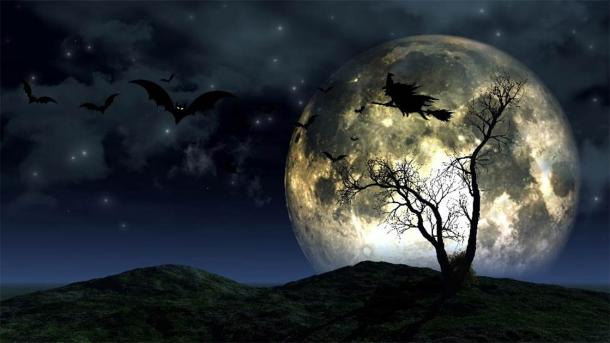
A Halloween full moon. ( Kirsty Pargeter /Adobe Stock)
The Almanac informs that Native American cultures called the first full moon of the month, on Oct. 1, the “ Harvest moon ,” while Halloween’s full moon was the “Hunter’s moon.” The second moon was associated with a hunter because “The leaves are falling from trees, the deer are fattened, and it ’s time to begin storing up meat for the long winter ahead.” What’s more, this Halloween full moon will be the second full moon in October, and this won’t happen again for two decades.
Irish Astronomer Calls for Lunar Interaction
This Saturday night is also when the planet Uranus is at opposition to the Sun, therefore it is close in the sky to the Blue Moon. Speaking with the Irish Times , astronomer David Moore from Astronomy Ireland said, “Uranus is 3.8 degrees above the moon that evening.“ However, the skywatcher says with the full moon so close to the planet in the sky it will be difficult to see without binoculars.
The astronomer described the fact that two full moons appear in October, and the appearance of Uranus beside the full moon occurring on Halloween, is “an extremely rare event.” And to record it, Mr. Moore has invited moon gazers to record their photos and thoughts on Astronomy Ireland’s social media platforms.
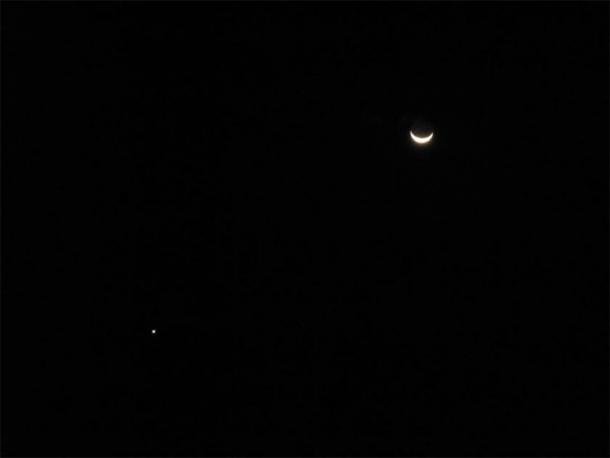
Uranus by a crescent moon. (Leonora (Ellie) Enking / CC BY SA 2.0 )
Maintaining Ancient Ways
Artifacts and architecture from the ancient world can often be related to astronomical phenomena. Circular patterned jewelry cast in rich yellow gold and temples most often represented the Sun while crescent shaped-artifacts forged in silver were emblematic of the moon. “ Gold Lunula ” are ancient neckpieces shaped like crescent moons mostly found in Ireland dating to 2460–2040 BC, and several examples are kept in the National Museum of Ireland . These rare lunar artifacts were once worn by tribal-priestesses acting as consorts for moon goddesses during rituals and many archaeologists think they may have served as lunar calendars.
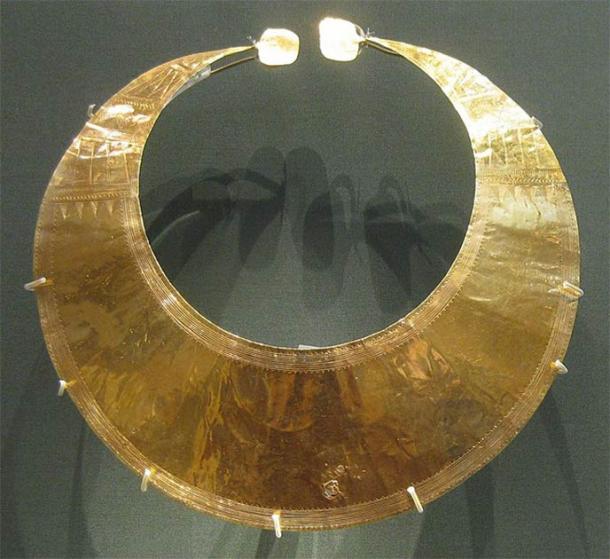
A gold lunula found in Blessington, Co. Wicklow, Ireland and currently in the collection of the British Museum. ( CC0)
While many solar alignments have been identified at Neolithic sites in Western Europe, the moon rises and sets on the horizon just like the Sun, but lunar alignments in architecture are less frequently discovered. But when it comes to Neolithic Ireland and Scotland, it seems ancient people revered the moon in just the same light as the sun.
Lunar Alignments of the Celtic World
In his 1983 book, The Stars and the Stones, author Martin Brennan recounted his experience on March 17, 1980, inside the Neolithic mound “Cairn T” at Loughcrew, County Meath. A beam of light from the rising Sun illuminated a carved stone at the back end of the rock-lined passage and a fortnight later, on April 1, the moon was seen rising from the same spot on the horizon. This second moonrise cast a shaft of light along the ancient stone passage, illuminating the same carved stone at the back of the chamber. Brennan suggested that as well as coordinating with the Sun cycle, the Irish Neolithic burial mounds were aligned with “where the moon was seen rising on the horizon.”
Flying over to Bronze Age Scotland, The Hill O Many Stanes in Caithness features over 200 upright standing stones set out in rows running approximately north and south creating a fan-shaped pattern. In Megalithic Lunar Observatories professor Alexander Thom presented evidence that this stone row was in effect “a Bronze Age lunar observatory, tracking lunar movements over a cycle of 18.6 years.”
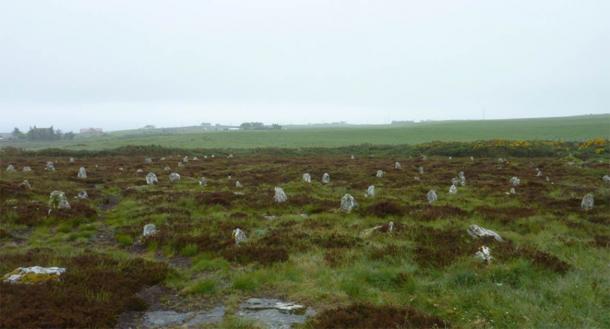
The Hill O Many Stanes, Mid Clyth, Caithness, Scotland. (Otter/ CC BY SA 3.0 )
So this Halloween, when you look up and see the ghostly silver light of the Blue Moon, take a moment to reflect on what that silver disc meant to our ancestors. For while at this time of year today’s children fill their bags with sweets, not so long ago, under the light of the Harvest and Hunter’s moon, our forefathers filled their grain stores. And they also worried about mischievous spirits at this time of year, when the veil between this world and others is said to be at its thinnest.
Top Image: A Halloween full moon. Source: Romolo Tavani /Adobe Stock
By Ashley Cowie
Related posts:
Views: 1
 RSS Feed
RSS Feed

















 October 31st, 2020
October 31st, 2020  Awake Goy
Awake Goy 
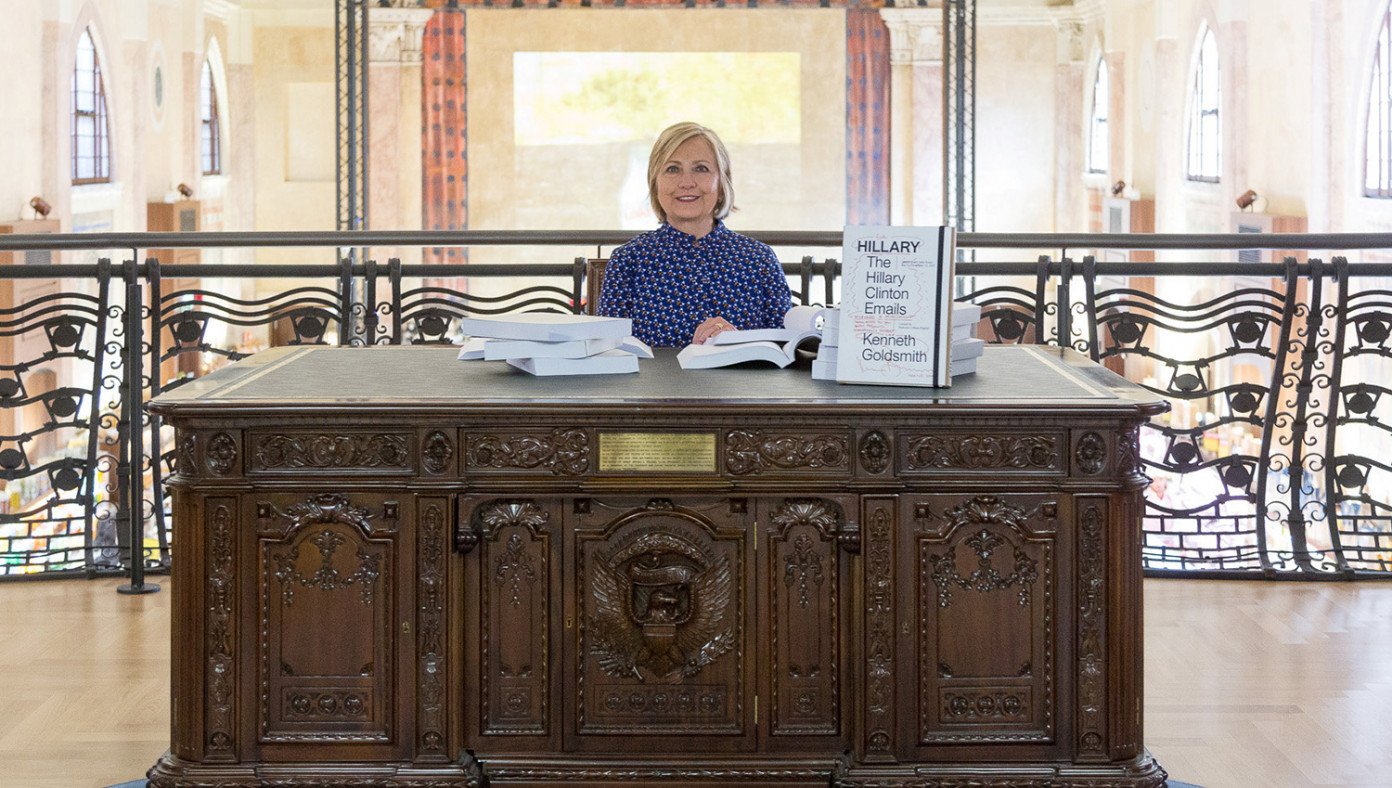



 Posted in
Posted in  Tags:
Tags: 
















